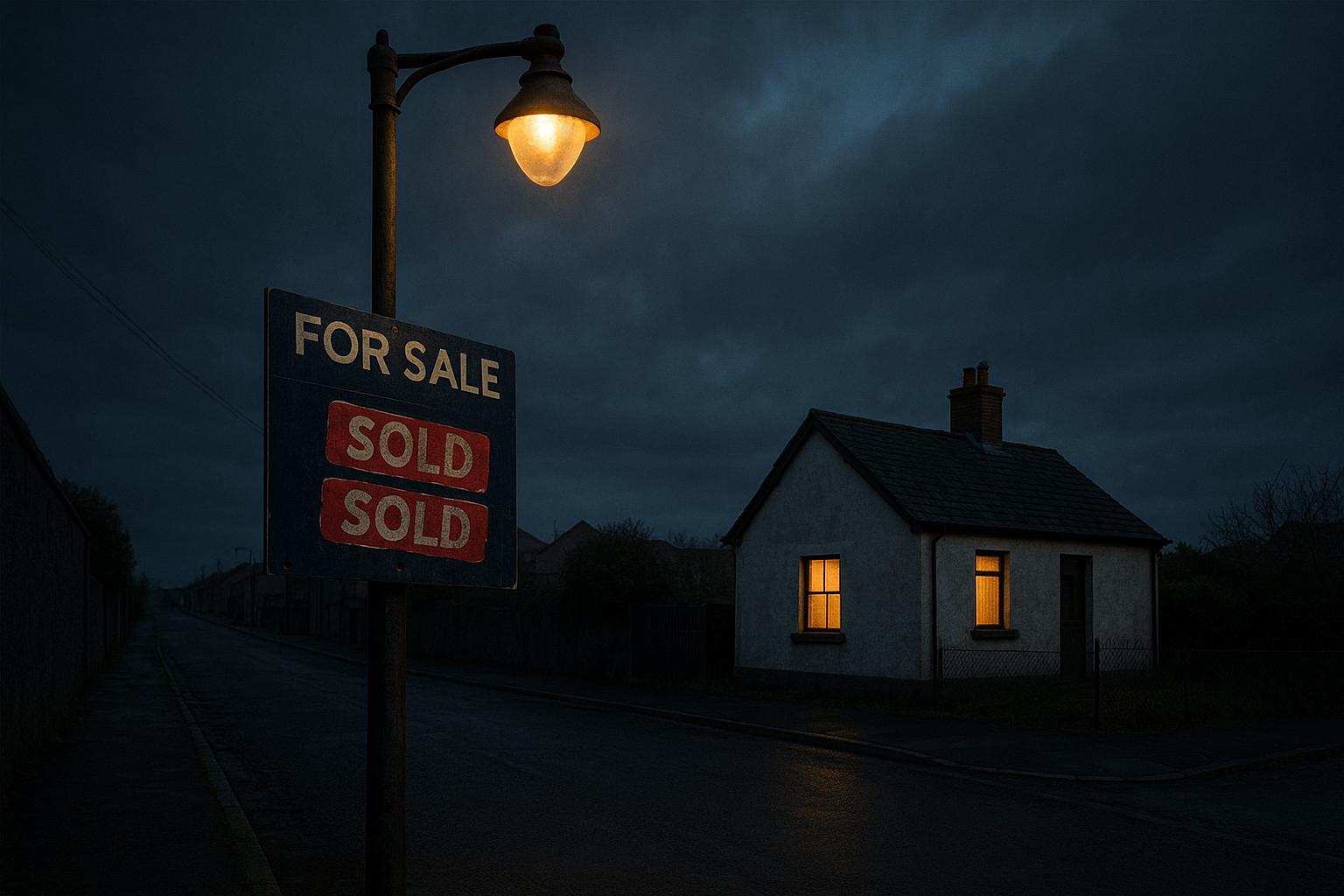In August 2025, the UK housing market showed signs of significant cooling, with key indicators pointing to a sharp decline in buyer activity, home sales, and house prices, reflecting growing economic uncertainty and persistent inflation. According to the Royal Institution of Chartered Surveyors (RICS), agreed sales fell markedly, with 24% of property professionals noting declines—up from 17% in July. New buyer enquiries also dropped sharply, with 17% of professionals registering a fall in August, more than double the previous month’s 7%. House prices continued to retreat, with a net balance of 19% of respondents seeing prices fall rather than rise, marking the most pronounced decline in over 18 months. This deterioration was particularly evident in regions such as East Anglia and the South West of England, though Northern Ireland continued to defy the trend with rising prices.
The decline in market momentum comes amid broad economic and fiscal apprehensions, as well as uncertainty over the future direction of interest rates amid inflation that remains stubbornly high. RICS market analyst Tarrant Parsons highlighted that concerns over the wider economic outlook and inflationary pressures are weighing heavily on buyer sentiment. Inflation in the UK stood at 3.8% in July, the highest among major advanced economies, with the Bank of England forecasting a peak around 4% before a gradual return to the 2% target by mid-2027. This environment has left buyers reluctant to commit, and sellers increasingly cautious about listing properties, with new instructions to sell decreasing for the first time since June 2024. A small net balance of 3% of professionals reported falling new seller instructions, indicating a tightening supply amidst softening demand.
The rental market is experiencing distinct pressures, with landlord instructions to let properties falling steeply by 37%, the most significant contraction since April 2020. This decline in rental stock is largely attributed to landlords retreating due to impending tax changes, such as potential national insurance levies on rental income, alterations to inheritance and property taxes, and new renters’ reform legislation banning "no fault" evictions and imposing tighter housing standards. These regulatory changes, combined with elevated interest rates, are prompting landlords to exit the market, thereby exacerbating shortages. Despite this, tenant demand remains resilient, supporting expectations for rent increases of approximately 3% over the next year.
While much of the UK housing market is subdued, Northern Ireland remains an outlier. Recent RICS and Ulster Bank data show the Northern Irish housing market maintaining positive momentum, with 80% of survey respondents noting price rises over the last three months—markedly higher than the national average. Expectations remain buoyant, with 60% anticipating further price increases through the final quarter of the year, alongside optimism for sales growth, despite a modest slowdown in demand and supply growth compared to previous months. This regional divergence underscores differing economic conditions and market dynamics across the UK.
The previous year had shown a more optimistic housing market environment. In August 2024, RICS data had revealed a recovering market with house price balances turning positive for the first time since October 2022, buoyed by mortgage rate cuts and rising buyer demand. Surveyors observed improved sentiment with new buyer enquiries rising and sales forecasts hitting their highest levels since early 2020. However, this improvement was short-lived as the market environment deteriorated in 2025. The recent shift from tentative recovery to marked cooling highlights the sensitivity of the housing market to economic pressures including inflation, fiscal policy uncertainty, and interest rate volatility.
Looking ahead, industry experts caution that realism in pricing remains crucial as uncertainty lingers surrounding the trajectory of interest rates and the UK government's upcoming fiscal policies. While some optimism persists about the longer-term prospects for house prices and rental growth driven by fundamental demand and supply imbalances, near-term challenges are expected to persist. Professional landlords hope that renewed focus on housebuilding targets by the government can alleviate supply constraints in the future and create opportunities to meet the growing demand in both owner-occupied and rental sectors.
📌 Reference Map:
- Paragraph 1 – [1], [2], [3]
- Paragraph 2 – [1], [2], [3]
- Paragraph 3 – [1], [3]
- Paragraph 4 – [1], [6]
- Paragraph 5 – [4], [5]
- Paragraph 6 – [7], [3], [2]
Source: Noah Wire Services
